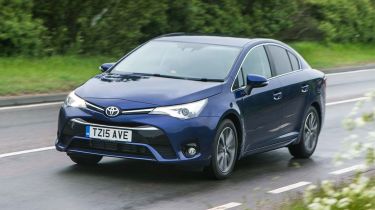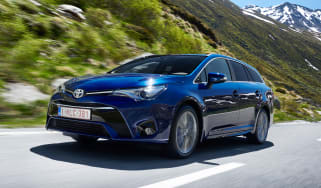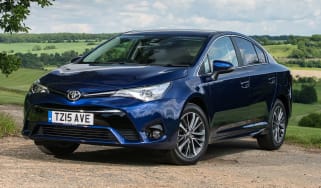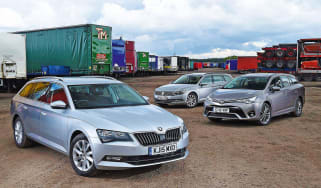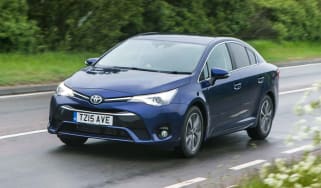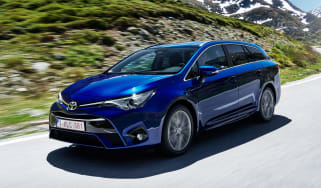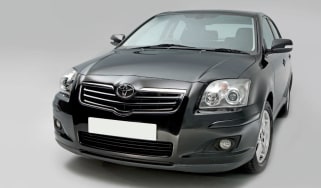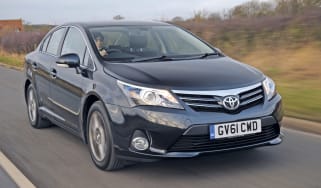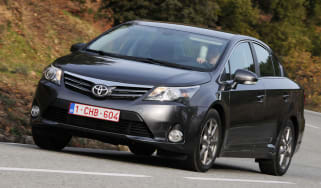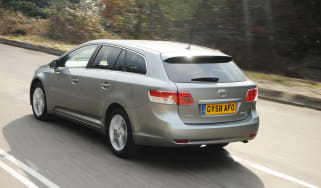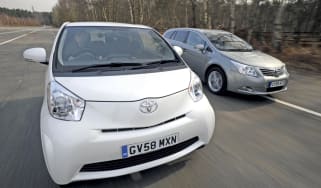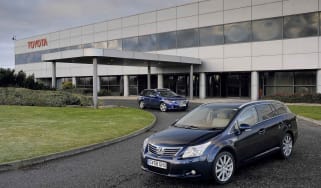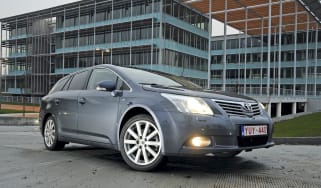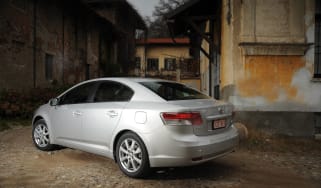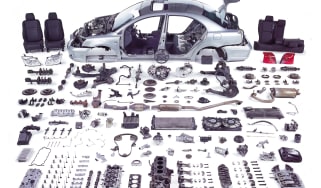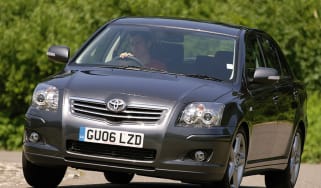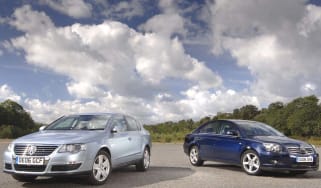Toyota Avensis (2015-2018) review
We're already a couple of facelifts into the Toyota Avensis, and the Ford Mondeo and Mazda 6 rival is showing its age

The Toyota Avensis competes in the mid-sized executive saloon segment and can count cars like the Ford Mondeo, Vauxhall Insignia and Mazda 6 as its chief rivals.
It's fair to say it is one of the lesser known saloons in the class and you can thank dreary styling inside and out and average driving dynamics for that. However, a facelift in 2015 brought the Avensis in line with the rest of the Toyota range – models like the Aygo, Yaris and Auris – and introduced more daring styling and an upgraded interior.
Thanks to its competitive price, low running costs, comfort, efficiency and reliability, the Avensis remains a favourite of company car owners and taxi drivers alike. It’s certainly an accomplished machine, but it’s one you buy with your head rather than your heart.
We’ve had the Toyota Avensis for sale in it current guise since 2009, give or take a couple of facelifts. The model is available in saloon or estate car format – the latter badged as the Avensis Touring Sports - but there’s no hatchback derivative. The Avensis lines up against such rivals as the Ford Mondeo, Volkswagen Passat and Vauxhall Insignia, and against such quality competition it’s fair to say the Toyota is showing its age. It also means there’s lots of choice and a wide variety of prices if you’re looking at a used Toyota Avensis.
Used - available now

2023 Volkswagen
Tiguan
24,615 milesAutomaticPetrol2.0L
Cash £31,495
2019 Vauxhall
Mokka
46,000 milesAutomaticPetrol1.4L
Cash £10,991
2022 Toyota
Corolla Touring Sports
14,266 milesAutomaticPetrol1.8L
Cash £18,670
2024 Land Rover
Defender 130
16,342 milesAutomaticDiesel3.0L
Cash £67,500Having said that, a Toyota Avensis still has a reasonable amount going for it. The Avensis is roomy, relatively economical and clean, and the 2.0-litre diesel is especially good for tax purposes – especially with the six-speed manual gearbox option.
Toyota revised the Avensis with facelifts in 2011 and 2015, which have made the car a little more interesting visually, but there’s no denying rivals like the Skoda Superb make a more impactful style statement. The same story is repeated inside, as the Toyota has a simplistic and functional interior but doesn't offer much in the way of wow factor.
Driving the Avensis won’t put a smile on your face either, although it's a comfortable and refined cruiser. It’s not an engaging drive though, as the steering feels inert and over-soft suspension means there’s lots of pitch and roll in corners. Rivals like the Mazda 6 offer a lot more enjoyment behind the wheel.
There's a small and simple range of trims and it's clear Toyota is thinking about the company car driver. The range kicks off with Active through to Business Edition, Business Edition Plus and top-of-the-range Excel. All cars get air-con, Bluetooth, cruise control and LED daytime running lights. The Business Edition adds an eight-inch touchscreen, reversing camera, auto lights and wipers and 17-inch alloys, while Plus gets part-leather seats, LED headlamps, rear privacy glass and unique alloys. The range-topping Excel adds leather, a panoramic roof and advanced connectivity options.
Engines, performance and drive
Toyota’s 2015 facelift didn’t just tweak the car’s aesthetics – the Japanese car maker also made changes to the noise isolation and suspension. While it did improve the way the Avensis handles, it’s still someway off the class leaders for driver enjoyment. Lifeless steering means it’s beaten by both the Mazda 6 and Volkswagen Passat in the corners, and even the now more grown-up Ford Mondeo is more fun to drive.
That said, the Avensis is comfortable and quiet on the motorway, making it a solid choice if you spend a lot of time trawling up and down the country. The soft suspension makes light work of lumps and bumps, with only the biggest potholes tending to send jolts through the cabin.
Overall, the Avensis is a safe, refined and comfortable car to travel in. While this is all some buyers will ever need, it's just that the Avensis' nearest rivals manage to do this as well as adding a bit of fun to the whole driving experience.
Engines
In terms of engines, the diesels make the most sense; they're refined and offer the best mix of economy and performance.
The best all-round engine is the 2.0-litre diesel engine with 141bhp, which allows the Avensis to accelerate from 0-62mph in 9.5 seconds. There's also a new 1.6-litre D-4D diesel – 110bhp and 0-62mph taking 11.8 seconds – and a 145bhp 1.8-litre petrol that gets to 62mph 9.4 seconds.
Potential buyers would be better staying away from the 1.8-litre petrol and instead going for one of the diesels. Not only will diesel power appeal more when it comes to part-exchange time, but the petrol is a bit of a lacklustre engine.
The six-speend manual is the best gearbox too, so unless you really need a self-shifter, we wouldn’t bother with the CVT Multidrive S box.
MPG, CO2 and Running Costs
Choosing a diesel engine in your Avensis is the best decision as not only is more efficient on the road but it's also a more pleasant engine to live with.
The most frugal is the 1.6-litre. It's a BMW-derived engine and is smooth enough and can return up to 67.3mpg and emitting 109g/km of CO2.
The only other diesel in the range is another BMW-derived unit – the 2.0-litre D-4D. It can return 62.8mpg and emitting 119g/km of CO2 on 17-inch wheels, and is the pick of the range for most company car drivers. Up-spec to 18-inch wheels and there is a slight penalty in BiK tax although there's very little difference between manual or automatic gearboxes.
With rivals car makers offering downsized petrol engines with turbochargers, the Avensis' naturally-aspirated 1.8-litre engine looks old. Available with either a six-speed manual or a six-speed automatic gearbox, it's the auto that's the most frugal – 47.9mpg and 140g/km. It is a bit lethargic though and not particularly sparkling to drive.
Toyota offers no other engine choices in the Avensis. Unlike VW or Ford or Skoda, there's no eco-special – these firms, for instance, offer 1.6-litre diesels that can return (claimed) in excess of 70mpg.
Insurance groups
The cheapest Avensis models to insire are the petrol powered ones which sit in groups 16-17. The diesels call in categories 20 and 24, so premiums are a little higher.
Depreciation
The Avensis holds onto its value pretty well. Our experts have calculated all models hold onto between 39 and 46 per cent of their value after three years, which is better some rivals like the Vauxhall Insignia.
To get an accurate valuation on a specific model check out our free car valuation tool...
Interior, design and technology
Despite a 2015 facelift, the Toyota Avensis remains a fairly dull – if inoffensive – family saloon. The facelift also brought in improved soft-touch plastics and a smarter looking design for the dashboard as well as new fabrics for the seats. It's a big improvement and the Avensis' interior feels built to last, but it remains in the conservative end of the market for interior ambience, along with the Skoda Superb.
The trim range is simple too. Entry-level Active gets a Pre-Crash Safety system with Autonomous Emergency Braking, cruise control, air conditioning, six-speaker CD/radio audio, Bluetooth, auto-dimming rear-view mirror, LED rear and daytime running lights and power windows, but no alloys.
Business Edition adds Toyota Touch 2 with Go touchscreen multimedia and navigation system, digital/DAB audio package with eight-inch display, reversing camera, front fog lights, rain-sensing wipers, dusk-sensing headlights, automatic air conditioning, 17-inch alloy wheels and part-Alcantara seat upholstery. There''s also Automatic High Beam, Lane Departure Warning and Road Sign Assist.
Business Edition Plus adds leather and Alcantara upholstery, front fog lights with a cornering function, LED headlamps, smart entry and rear privacy glass, while Excel gets Toyota Touch 2 with Go Plus, a 10-speaker audio system, full leather seat upholstery, electrically adjustable front seats with heaters and adaptive headlights.
Sat-nav, stereo and infotainment
If anyone has recently drive a Toyota Auris or a Verso, the Avenesis' infotainment system will be very familiar. You'll have to go for the Business Edition to get Toyota's Touch 2 system and overall it's a good unit – easy to navigate and use on the move with a good screen resolution.
For ease of use, it easily rivals the systems used in VW Group products; it's just a shame then that the imagery and colours used look just a little dated.
Top-of-the-range Excell gets Toyota Touch 2 with Go Plus that adds a 10-speaker stereo, voice command recognition, a wi-fi hotspot and 3D mapping. Sadly, there is no Apple CarPlay or Android Auto functionality on any Avensis.
Practicality, comfort and boot space
If the Avensis has been lagging behind the competition in most areas so far, it's with interior comfort and space where it draws abreast and, in some cases, ahead of its rivals.
Up front it's spacious with good visibility out and there's plenty of storage thanks to a large glovebox and a large central console cubby – although the cupholders are noticeably too small to hold most bottles and cups which is a shame.
The boot is large too with a wide opening and there's bags of rear space.
Dimensions and size
At 4.7 metres the Avensis is smaller than the Ford Mondeo and Vauxhall Insignia, although its curvy shape makes you think it's a large car in its class. Happily visibility out the back is good and parking is made easier thanks to a parking camera on Business Edition and above.
Leg room, head room & passenger space
In the back is where the Avensis makes a strong case for itself compared to it rivals. In the back there is loads of legroom and three passengers can sit in comfort thanks to there being no transmission tunnel – there's a completely flat floor. Due to the rear seats backs being reclined slightly, head room is good too and there's a general feel of spaciousness.
Boot space
While the Avensis does only come as a saloon (there's no hatchback version like on most rivals), boot space is adequate but not spectacular. The Mondeo and Insignia all have larger opening areas thanks to their hatchback tailgates, and with a boot capacity of 509 litres rising to a 1,320-litre maximum, the Passat saloon beats the Avensis too. There's also quite a large intrusion in the boot due to the wheelarches, but for most the space on offer will be enough. One touch controls in the boot allow the rear seats to fold down which is a handy feature, and is standard equipment.
Reliability and Safety
Toyota has an excellent reputation for reliability and the Avensis boasts a strong track record in this department. It comes with a five-year warranty, too, which should help to alleviate any doubts that may have been created by the high profile recalls that have hit Toyota’s brand in recent years.
Disappointingly though, the Avensis only managed 89th overall in our 2016 Driver Power Top 100 – althought it is a better result that 2015 where the car only managed a 111th finishing spot. In the 2016 survey the Avensis finished 38th for reliability and the interior's spaciousness was praised. However, owners said they weren't that impressed with running costs, fuel economy and performance.
The car hasn’t been crash-tested since 2009 – and the tests have become more demanding since then – but Euro NCAP gave it a five star safety rating, with a 90 per cent mark in the adult occupants category, 86 per cent for child occupants, 53 per cent for pedestrian protection, and 86 per cent in the safety assist category.
The Avensis does come with a decent haul of safety kit as standard. There's a large number of airbags, including one for the driver's knee, while safety kit like automatic emergency braking, electronic stability control, hill-start assistance and tyre-pressure sensors are fitted across the range. Fleet-savvy Business Edition adds lane depatrue warning, road-sign assistance and automatic high-beam lights.
Warranty
Like most other Toyotas on sale, the Avensis comes with a five-year industry standard three-year/100,000-mile warranty.
Servicing
The Avensis is available with fixed-price servicing, with a minor service costing £169 and a major one costing a very reasonable £239. Service intervals are every 10,000 miles for the diesel models and 12,500 for the 1.8 petrol.
